[Robert Baruch] had something strange on his hands. He had carefully decapped 74LS189 16×4 static RAM, only to find that it wasn’t a RAM at all. The silicon die inside the plastic package even had analog elements, which is not what one would expect to find in an SRAM. But what was it? A quick tweet brought in the cavalry, in the form of chip analysis expert [Ken Shirriff].
[Ken] immediately realized the part [Robert] had uncovered wasn’t a 74 series chip at all. The power and ground pins were in the wrong places. Even the transistors were small CMOS devices, where a 74 series part would use larger bipolar transistors. The most glaring difference between the mystery device and a real LS819 was the analog elements. The mystery chip had a resistor network, arranged as an R-2R ladder. This configuration is often used as a simple Digital to Analog Converter (DAC).
Further analysis of the part revealed that the DAC was driven by a mask ROM that was itself indexed using a linear feedback shift register. [Ken] used all this information to plot out the analog signal the chip would generate. It turned out to be a rather sorry looking sine wave.
The mystery part didn’t look like any function generator or audio chip of the era. [Ken] had to think about what sort of commodity part would use lookup tables to generate an audio waveform. The answer was as close as his telephone — a DTMF “touch tone” generator, specifically a knockoff of a Mostek MK5085.
Most investigators would have stopped there. Not [Ken] though. He delved into the construction and function of the DTMF generator. You can find the full analysis on his site. This isn’t [Ken’s] first rodeo with decapped chips. He’s previously examined the Intel 8008 and presented a talk on silicon reverse engineering at the 2016 Hackaday Superconference. [Robert] has also shown us how to pop the top of classic ceramic integrated circuits.


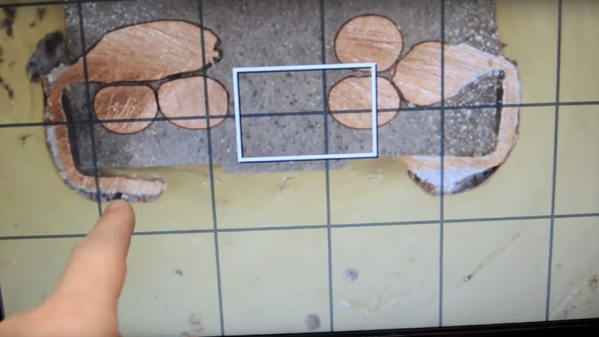
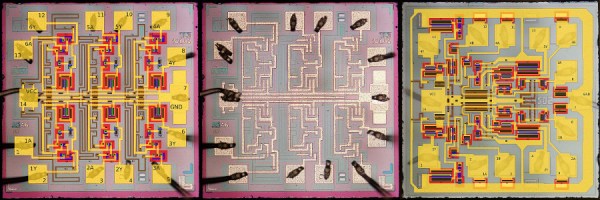
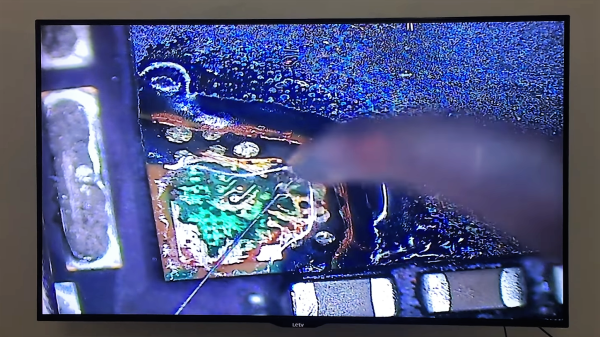

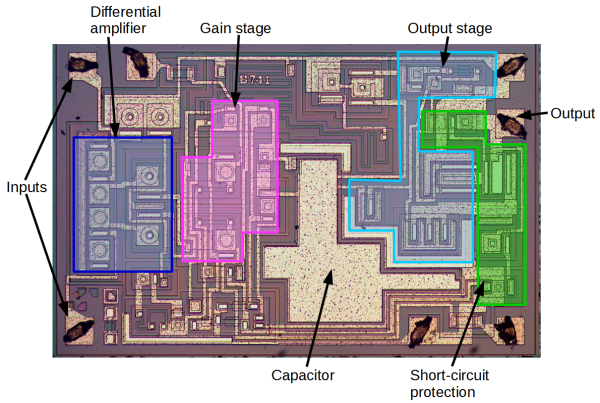
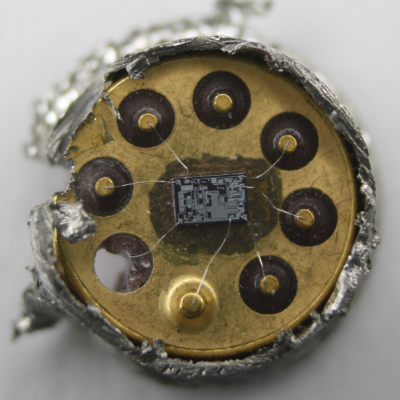 Rather than risk the boiling acid method commonly used to decap epoxy-potted ICs, [Ken] wisely chose a TO-99 can format to attack with a hacksaw. With the die laid bare for his microscope, he was able to locate all the major components and show how each is implemented in silicon. Particularly fascinating is the difference between the construction of NPN and PNP transistors, and the concept of “current mirrors” as constant current sources. And he even whipped up a handy interactive chip viewer – click on something in the die image and find out which component it is on the 741 schematic. Very nice.
Rather than risk the boiling acid method commonly used to decap epoxy-potted ICs, [Ken] wisely chose a TO-99 can format to attack with a hacksaw. With the die laid bare for his microscope, he was able to locate all the major components and show how each is implemented in silicon. Particularly fascinating is the difference between the construction of NPN and PNP transistors, and the concept of “current mirrors” as constant current sources. And he even whipped up a handy interactive chip viewer – click on something in the die image and find out which component it is on the 741 schematic. Very nice.
 [Jelmer] was curious to know if the price difference was all in the software. And in order to verify this decided that decapping was the only thing to do!
[Jelmer] was curious to know if the price difference was all in the software. And in order to verify this decided that decapping was the only thing to do!









